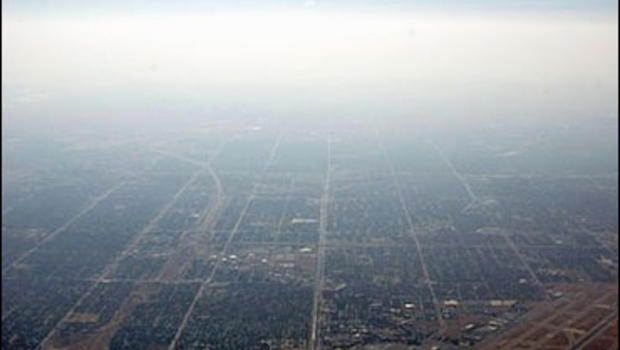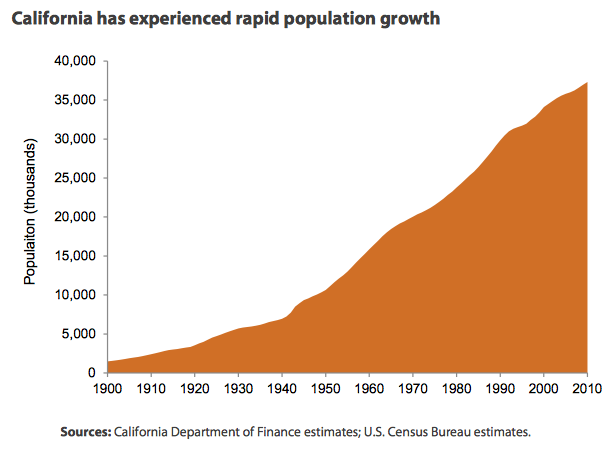Drought Assails California’s Air as well as its Water
Published on May 19th, 2015
The drought now wracking California is obviously wreaking havoc with the state’s limited and shriveling water resources – withering crops and orchards and lawns. What is less well known is that the drought is also affecting air quality.
 |
| Fine particulate matter PM10 and PM2.5 consist of particles much smaller than the diameter of a human hair. |
In its annual report, State of the Air 2015, the American Lung Association (ALA) explains the effects of the drought on air pollution in the state.
The ALA report divulges that many California cities, and especially Riverside and San Bernardino counties, have been experiencing record numbers of days with high levels of particulate matter air pollution – PM10 and PM2.5. PM10 is suspended particulate matter under 10 microns in diameter and PM2.5 is very fine particulate matter under 2.5 microns in diameter. These fine particles can penetrate deep into our lungs and become lodged there.
The lack of precipitation during the ongoing drought can trap fine particulate matter pollution close to the ground, contributing to asthma attacks and hospitalizations for respiratory disease. Rain washes these particles out of the air, and absent rain, they remain suspended in the air, and our lungs remain exposed to them.
 |
| Smog blots the view of downtown Los Angeles. |
The ALA’s State of the Air 2015 documents that overpopulated, traffic-congested California continues to have some of the worst air pollution in the entire United States. For the second year running, the Los Angeles metro area and Fresno-Madera metro area in the Central Valley top the list of the most polluted metropolitan areas in the country for ozone and particulate pollution, as measured both on a daily and on an annual basis. Overall, California cities continue to dominate the list of the most highly polluted air basins in the whole USA.
 |
| Smog blights the air over Fresno, Calif. |
Statewide, some 28 million Californians (out of a state population of 39 million), or more than 70 percent, live in counties damaged by unhealthy air. The most vulnerable residents are more than 3.3 million adults and children living with asthma in counties with impaired air quality. Other sensitive groups include children, seniors and those with Chronic Obstructive Pulmonary Disease (COPD), heart disease and diabetes.
In addition to causing or aggravating lung diseases and asthma attacks which send people to hospitals and emergency rooms, air pollution can even inhibit the development of children’s lungs.

The 2015 ALA report emphasizes that the San Joaquin Valley (southern Central Valley) faces the greatest looming air quality challenges in the state, especially with regard to particulate pollution. For years the population and traffic loads of the Central Valley have been booming, and not surprisingly given this boom and the drought, in all eight counties particulate pollution and the number of unhealthy days worsened since ALA’s previous annual report in 2014.
ALA points out that all regions of the state have shown progress in improving air quality in recent decades. The nation’s air is in fact cleaner today because of the Federal Clean Air Act of 1970, which led to hundreds of billions of dollars of investments in cleaner technologies to reduce tailpipe and smokestack emissions, as well as California’s pioneering clean air and clean energy laws.
But serious problems and challenges remain. And California’s air quality today would be much better still – perhaps even approaching a condition that is actually healthy to breathe – if its population hadn’t doubled since the Clean Air Act was passed in 1970.
Continuing the mass immigration that has driven California’s population growth over the last three decades will force additional population growth that further stresses the state’s already over-stressed air quality.




